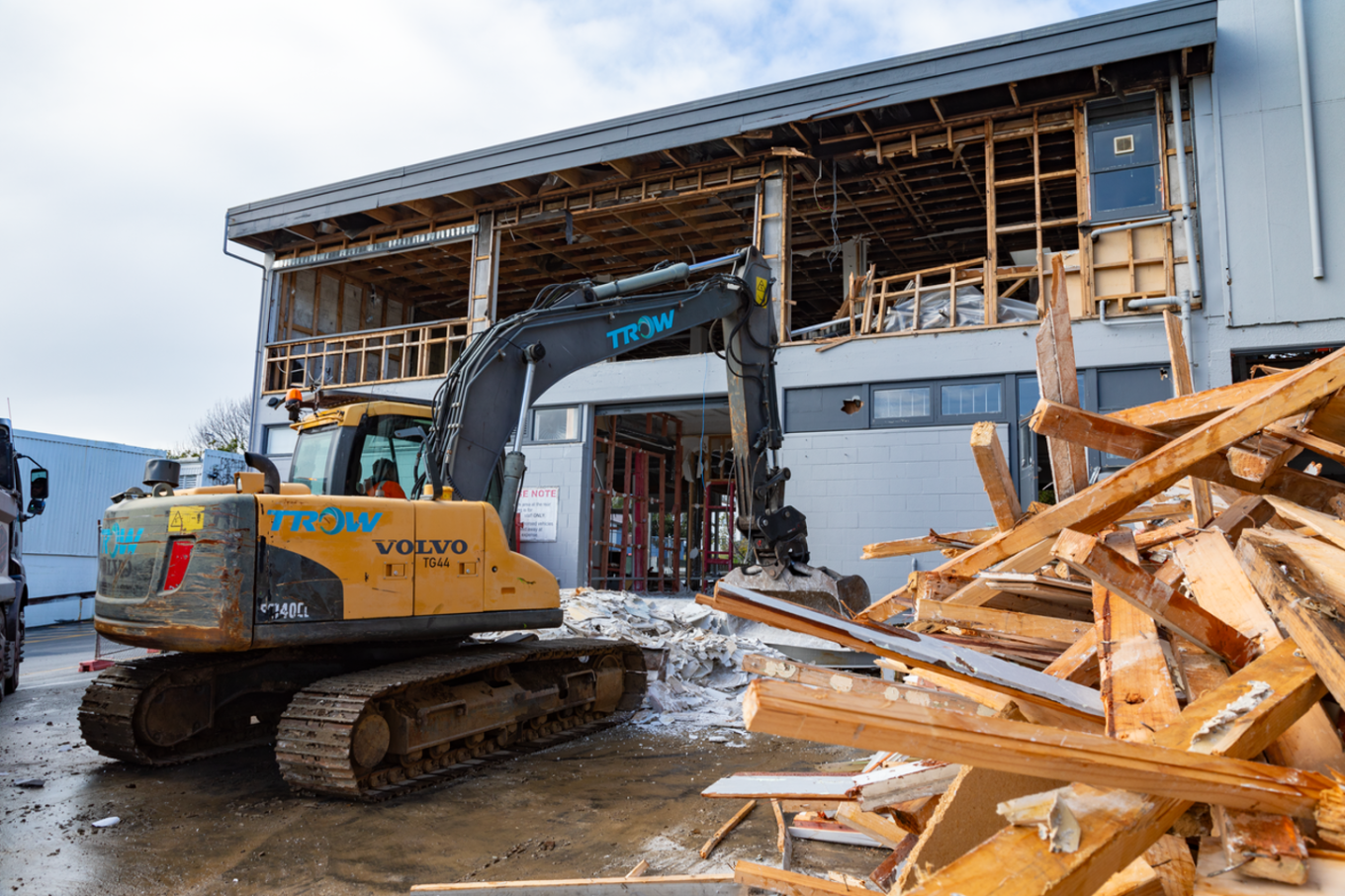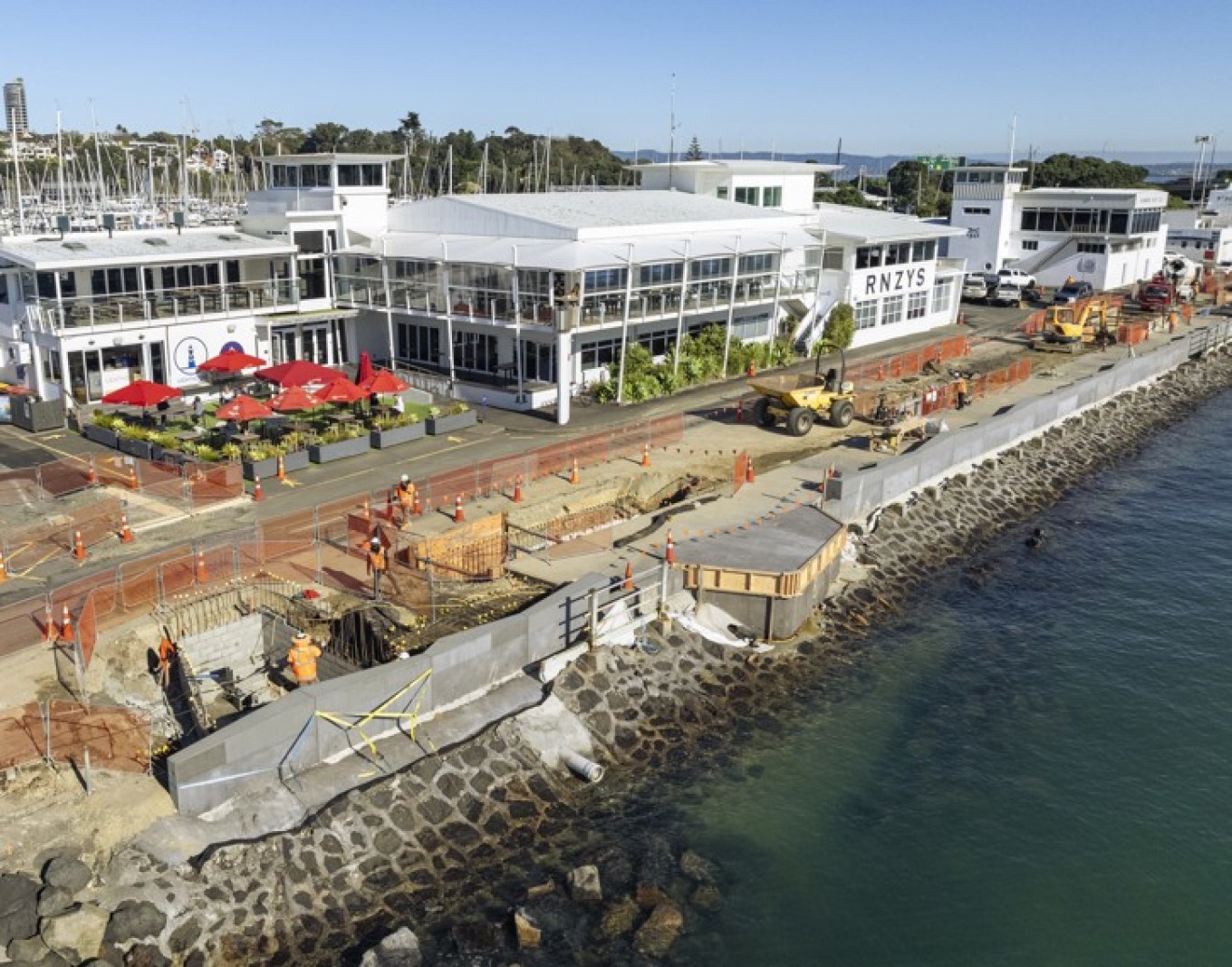Every year, we send more than 1.6 million tonnes of waste to landfill in Auckland, that’s more than a tonne per person. Of this 30% to 40% is construction and demolition waste, making this our largest waste-stream and therefore our biggest target if we want to reduce waste. By comparison, household waste is only 13% of total waste to landfill.
Auckland has a goal to be zero-waste by 2040. There is much we can do to help us achieve that goal.
This is one of the reasons Eke Panuku is taking a more sustainable approach to building and development in neighbourhoods where we undertake urban regeneration. This more sustainable approach means we are choosing to deconstruct buildings with the intention of diverting or reducing the waste that goes to landfills. Rather than simply demolishing buildings which are at the end of their lives or no longer needed, we take them apart and reuse and recycle the construction material where possible.
As we do our best work through smart strategic partnerships, our approach requires that our contractors and development partners use specific deconstruction methods for any structures being removed from our development sites. While this requires a bit more planning, it allows us to repurpose a greater amount of material, significantly reducing the waste sent to landfill.
It is sometimes assumed this approach would take more time and would be more expensive. It turns out it’s not.
Auckland Council’s Research and Evaluation Unit (RIMU) undertook a financial cost benefit analysis to test the potential benefits of waste diversion in development projects. After considering a whole raft of factors, such as recouping costs from selling materials from deconstruction sites; avoiding landfill expenses and transportation (of waste materials) costs; avoiding having to purchase new materials for a site (if recycling and reusing), the analysis found that deconstruction essentially breaks even from a cost perspective compared to traditional demolition.
And this doesn’t yet take into account the significantly greater economic, societal and environmental benefits that come from diverting more waste from landfills. The waste diversion options that RIMU analysed showed a likely benefit-cost ratio (BCR) between 2.2 and 2.8, which means for every $1 invested, we get between $2.2 and $2.8 in wider benefits.
A major reason for choosing deconstruction is its reduced environmental impact. The production of new materials and the extraction of raw resources for construction significantly contribute to climate change. By reusing or repurposing materials from deconstructed sites, we embrace a circular economy approach that helps minimise resource use, waste, and emissions.
Over the next six months, Eke Panuku is deconstructing a number of buildings across Tāmaki Makaurau Auckland to make way for much-needed new development of homes, offices and shops.
Below is a snapshot of some of these projects. Have a listen to this podcast also for more information.
Northcote
We have started the staged redevelopment of Northcote town centre. To prepare for this, we are working with TROW Group to take apart old buildings that need to make way for the new development. Along with TROW Group, we have teamed up with Wairau Zero Waste Hub and Awataha Marae to re-use deconstruction materials.
Before deconstruction started, reusable items were identified from the old buildings. Some of these materials were then provided to the Zero Waste Hub to sell to the community at reasonable prices. Some other items are finding a new life in community projects – both locally and in the Pacific Islands.
Besides the reusing of material, there is also some great community learning going on too. TROW has a job experience programme, and educational initiatives centred around material reuse, and together with Localised, they invited Awataha Marae to collaborate on the deconstruction trial too. The recycled materials will be used by Awataha Marae’s educational programme to build prefab sleepouts, demonstrating the practical application of sustainability principles in construction and design.
For more information on the award-winning Northcote master plan and how it will shape the future of the town centre, click here.

Avondale
We have deconstructed the former Kāinga Ora homes at 10 Racecourse Parade to enable more housing options in Avondale. The Auckland Council group has established a panel of deconstruction companies with a focus on collaboration, bringing larger contractors together with smaller ones.
Green Way Ltd has teamed up with Onehunga Community Recycling Centre (a social enterprise and the first Pasifika / Māori-led community recycling centre in the region) as subcontractors, providing valuable hands-on experience in sustainable practices as they work together to increase waste diversion.
Items such as vehicle shelters, washing lines, fencing and framing timber are being repurposed locally through the recycling centre. Other items such as doors, windows and guttering are also being repurposed. This not only reduces waste but also supports the local economy and fosters a culture of sustainability within the community.
Our commitment to sustainability extends to supporting charities such as PAWS Restart Animal Rescue, based in west Auckland. Garden sheds, pavers, and metal gates from the Avondale deconstruction are being repurposed to create additional dog runs, providing much-needed space for the increasing number of abandoned dogs seeking new homes (over the past year they have rehomed 190 dogs). Additionally, six bathtubs have been donated for use as water troughs and playful splash areas, enhancing the quality of life for the animals in PAWS' care.
In another example of helping to create a circular economy, we are reusing granite cladding removed from the exterior of the 135 Albert Street Auckland Council office building and turning them into terrazzo pavers. Some of these pavers, which have been stored in the Rosedale waste yards for more than five years, will be used in the upgraded town square outside Te Hono, Avondale’s new library and community hub.
These efforts are part of the wider Eke Panuku regeneration plans to revitalise Avondale through investment to deliver improvements that will serve the community in the future. Click here for more information on our work in Avondale.
Westhaven
Eke Panuku is recycling and reusing materials wherever possible during the upgrade of the Westhaven Marina seawall. The seawall project is being undertaken to protect people, infrastructure and assets from coastal flooding – as experienced during recent weather events in 2023 – but it also offered a great opportunity to repurpose construction material, diverting it from landfill.
For example, basalt pavers have been repurposed as tree pit edges and integrated into concrete channels. The old timber boardwalk was also removed and sent to the Onehunga Community Recycling Centre. These old timber boards have now been repurposed into a deck!
For more information on our work around Westhaven, click here.




